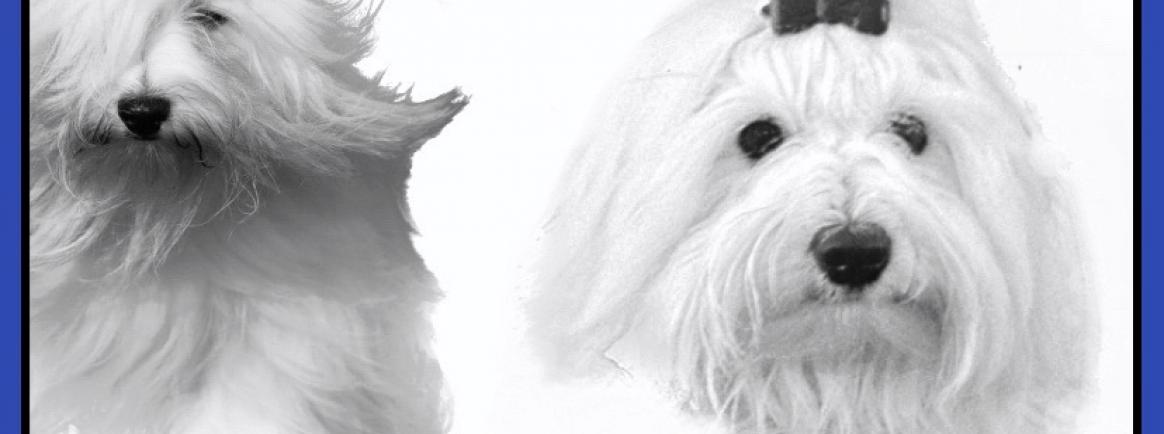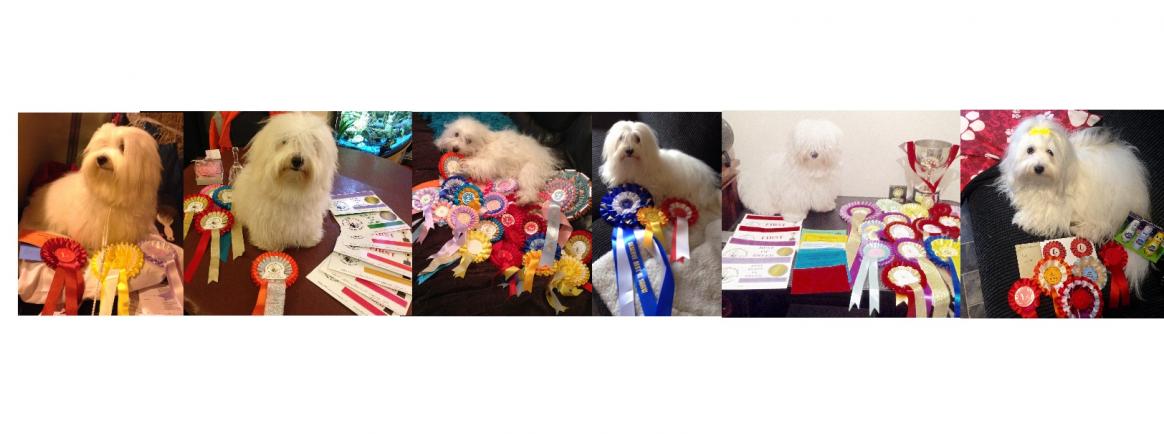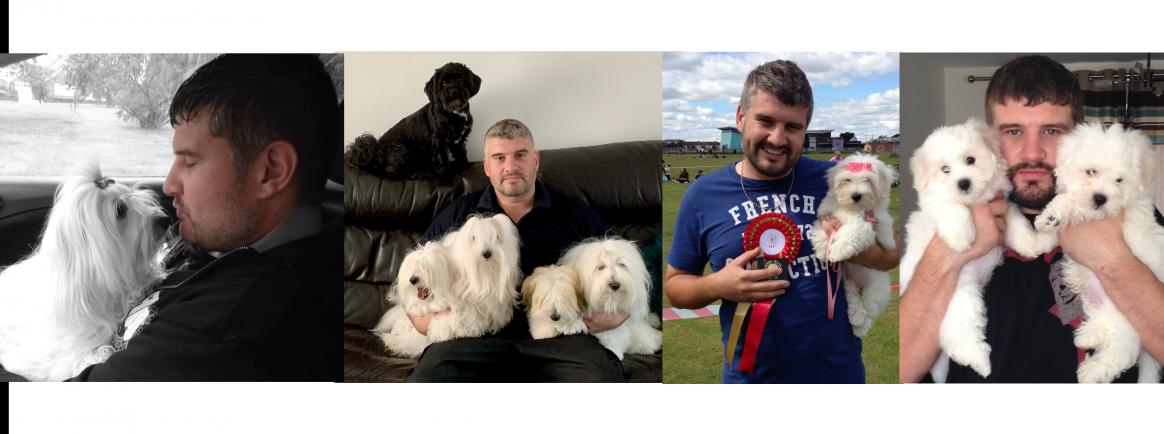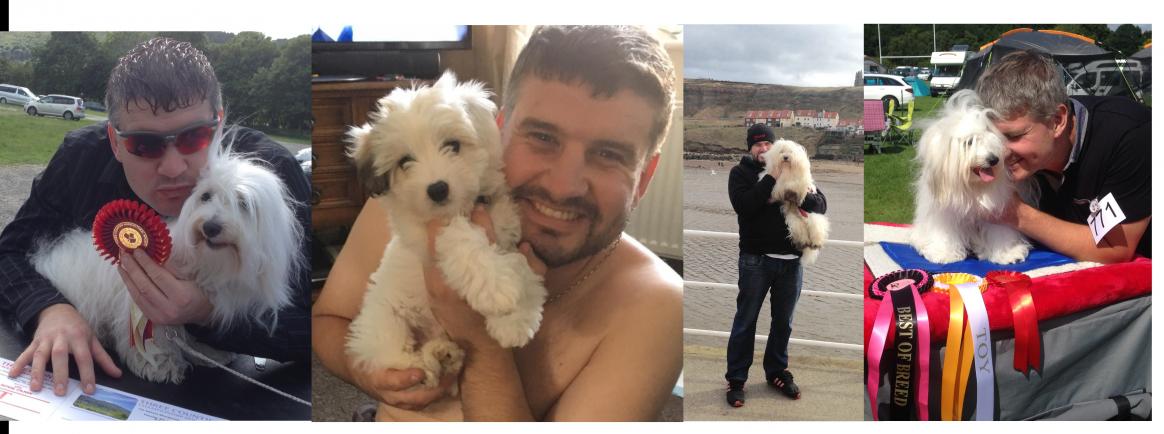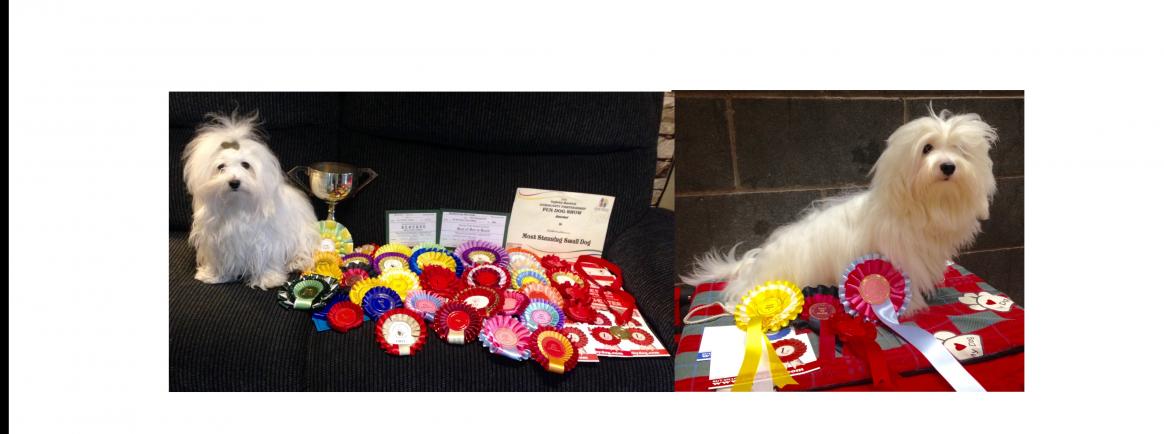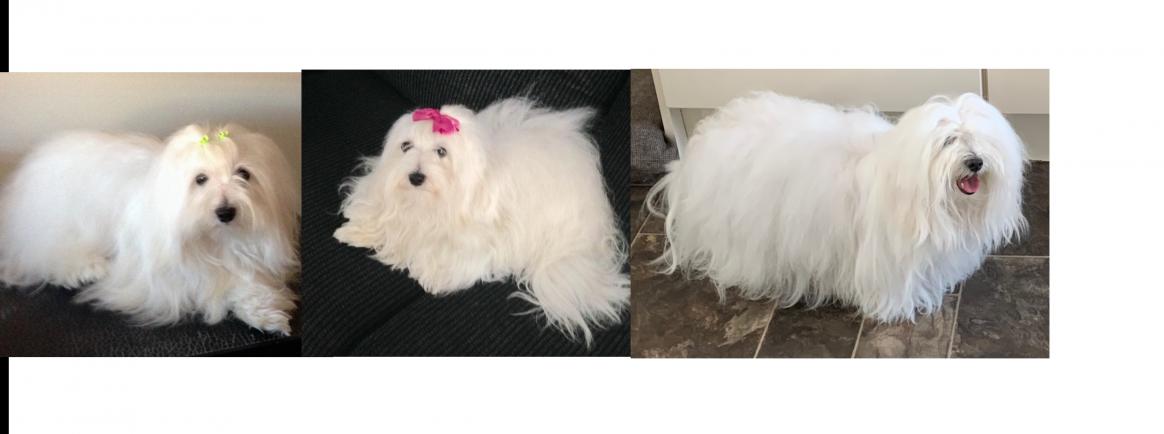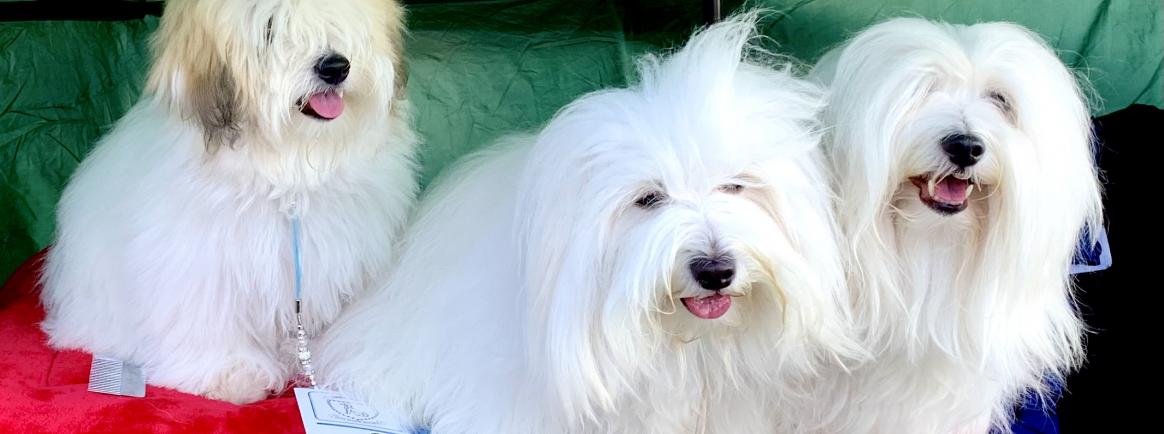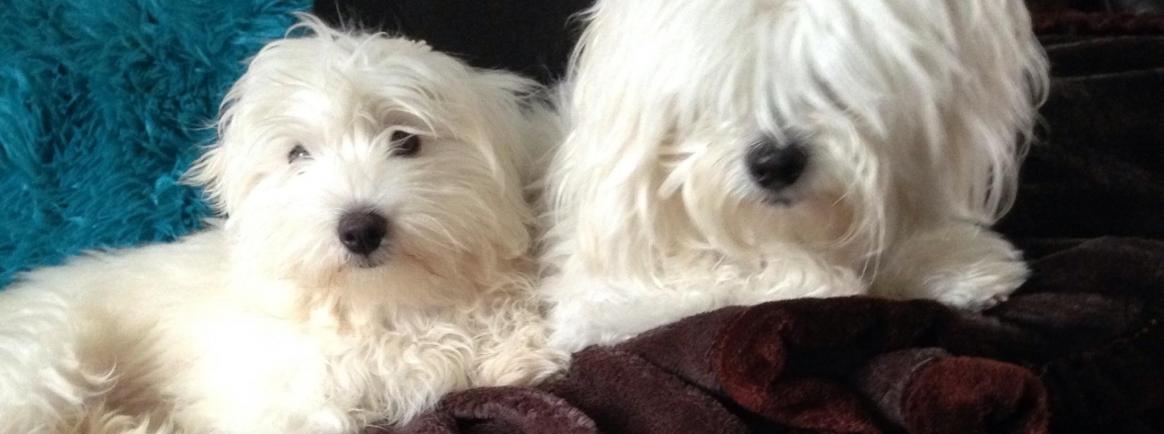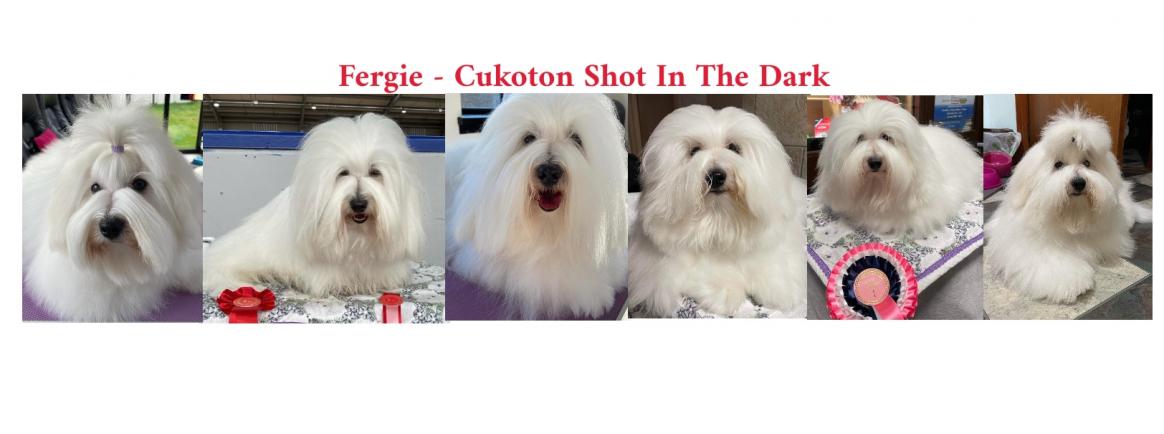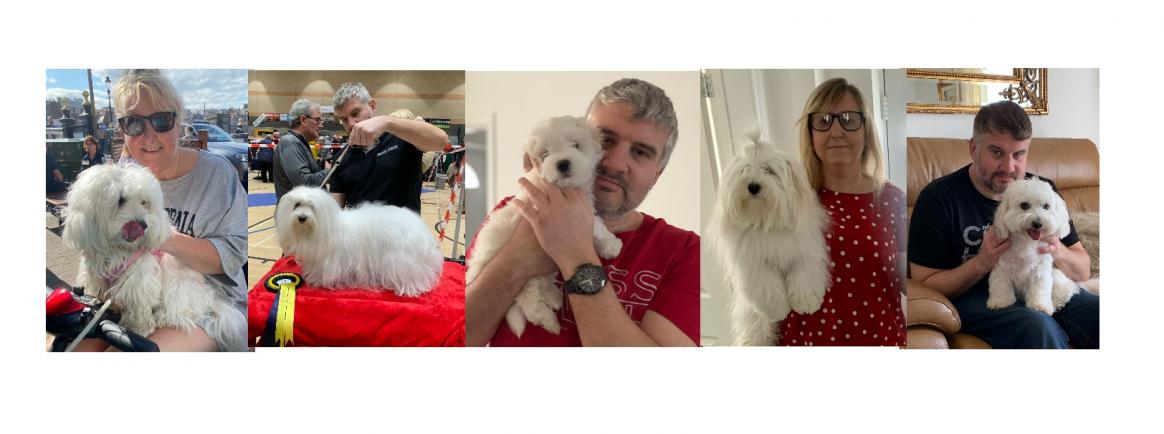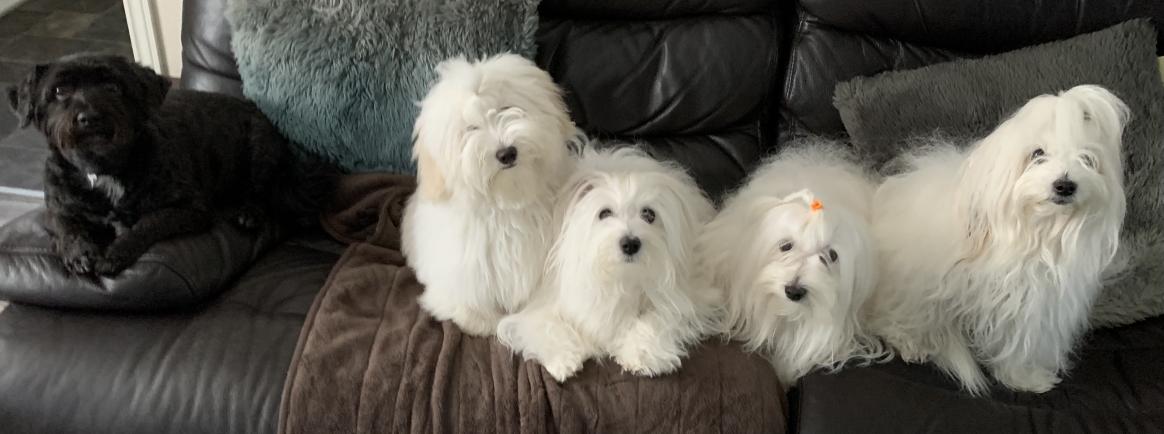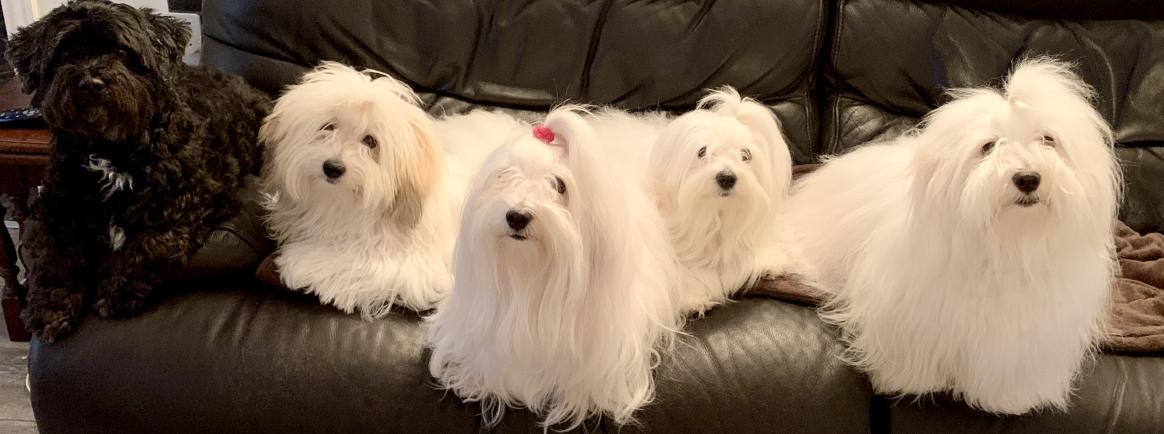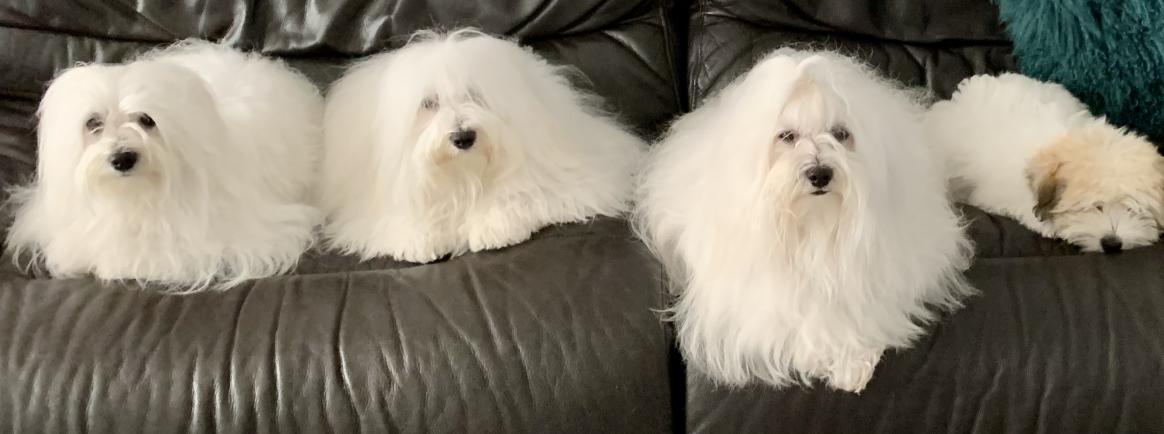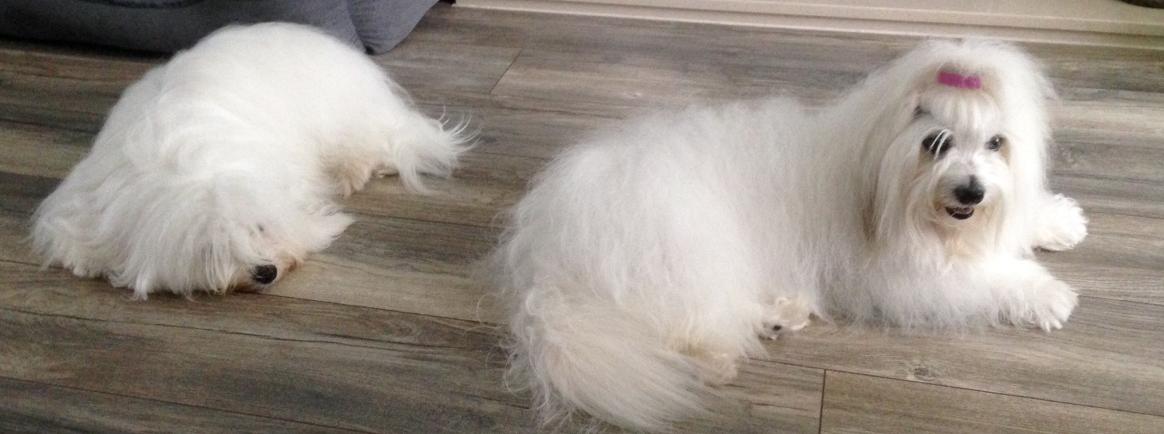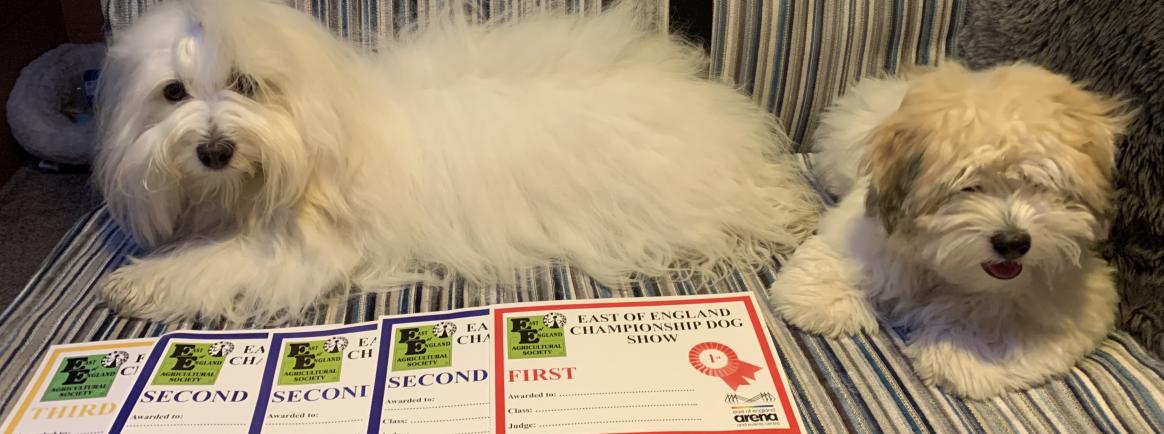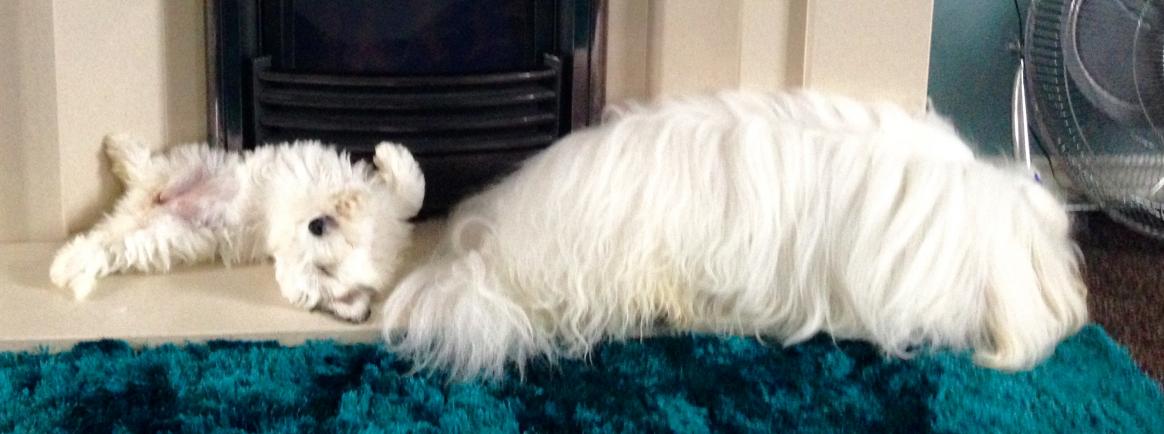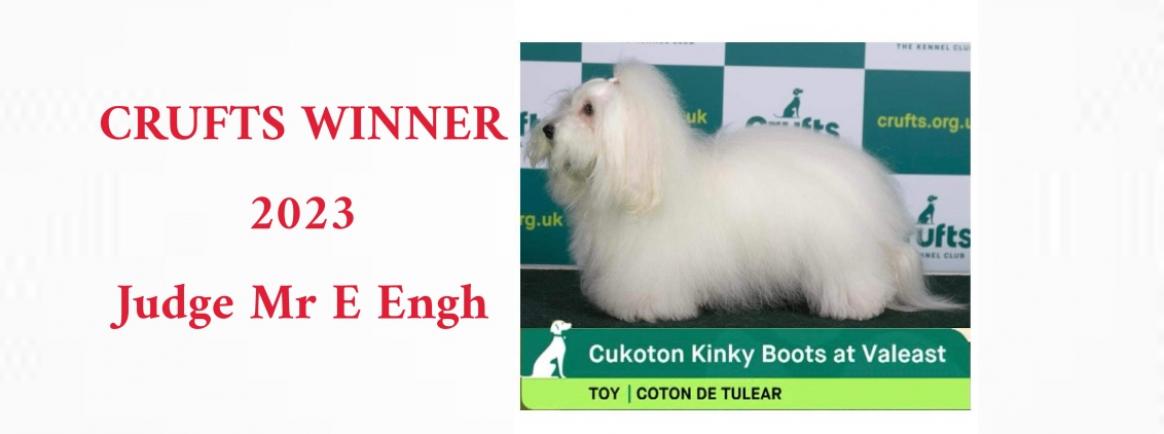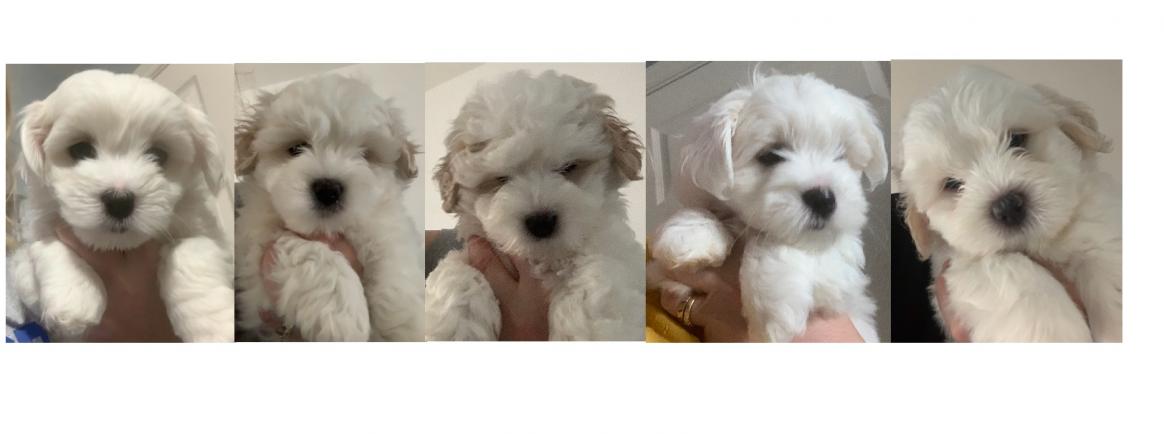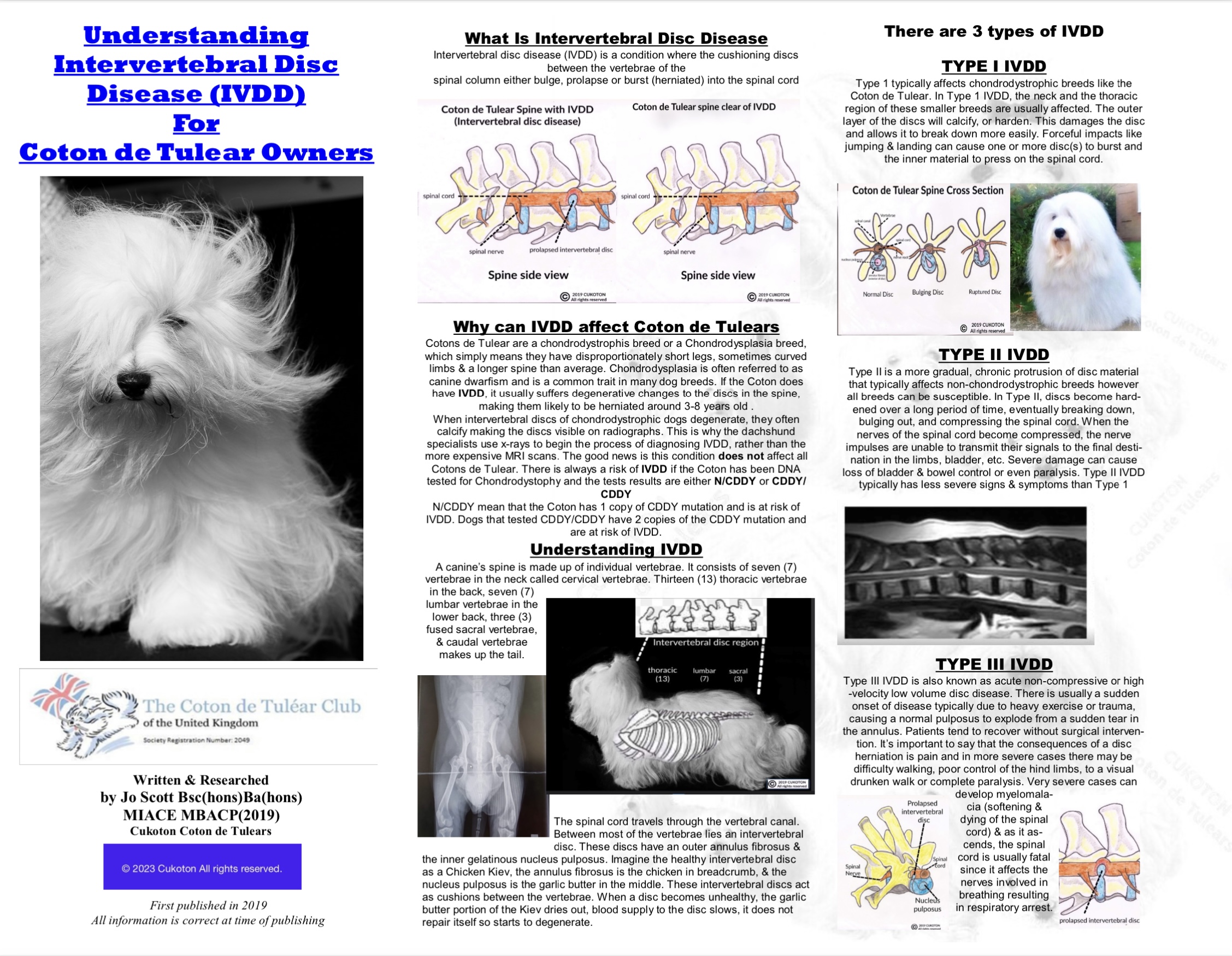
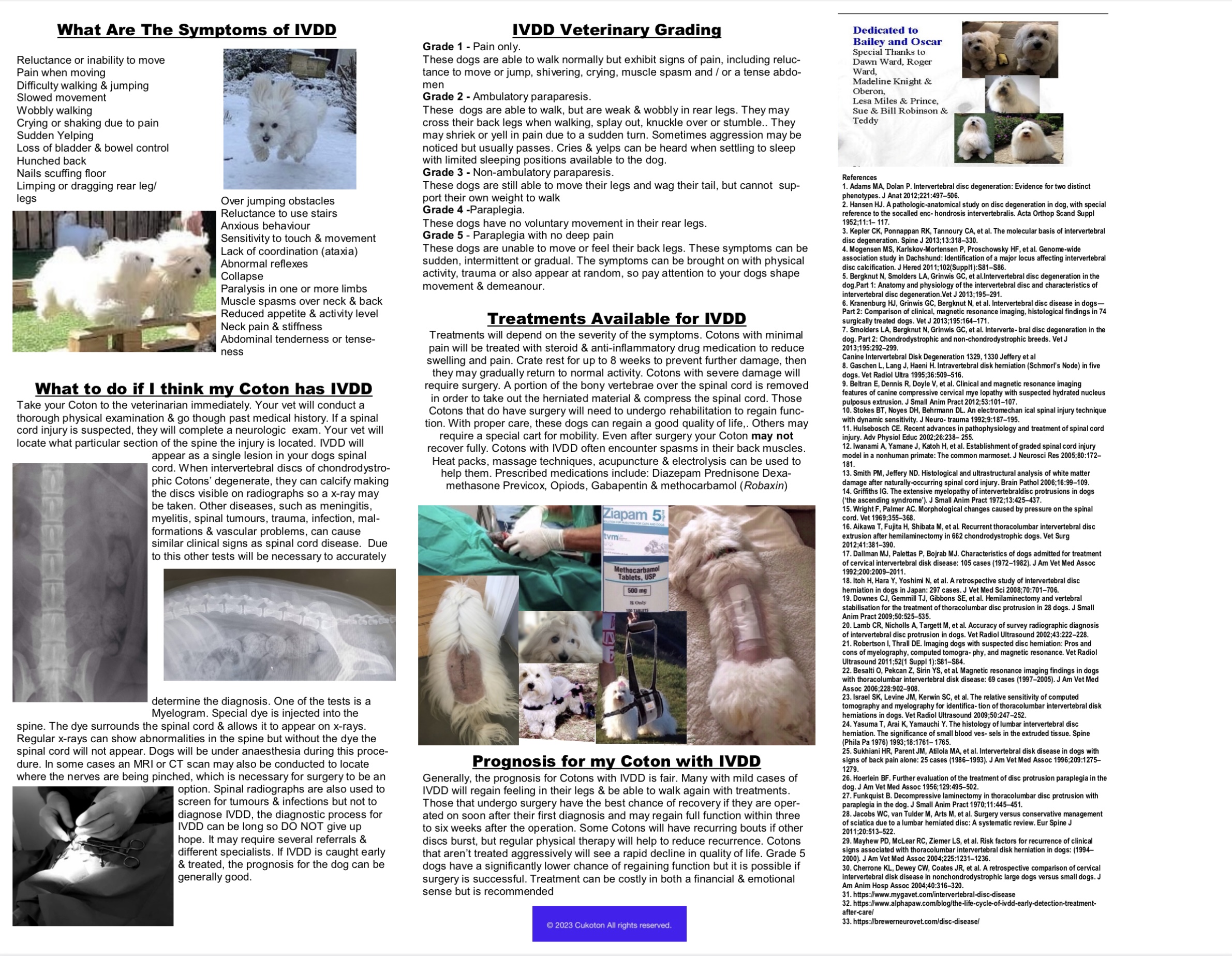
Why Do Cotons get intervertebral disc disease IVDD
I and my health team colleagues have been working with the ROYAL kennel Club in regards to IVDD with in our breed the Coton de Tulear. It’s a silent disorder as I’m often told not to scare people. This has never been my intention only to help owners and breeders avoid this disorder.
Do we have actual affected Cotons in the Uk sadly the answer is yes. What ages are they diagnosed from. The earliest to date was a mere 18 months and onwards.
I have been told to only give the facts if the owners approach me or the Coton de Tulear club of the United Kingdom as it could put potential new people off the breed if they think they aren’t healthy.
All breeds have health problems, none are infallible.
I’ve sent in so many documents to the RKC over the last few years in hope to prove some of the Cotons de Tulear are more susceptible to IVDD than most other chondrodystrophy and chondrodysplasia breeds and why this is happening with documented evidence that this is the case.
I was told by the RKC it’s because of the CFA12 FGF4 gene, but that cannot be completely true.
There are a number of other breeds whom also have 2 copies of the CFA12 FGF4 gene that don’t get IVDD until much later in life.
Our Cotons can get it as early as a few months old.
I sent the KC the latest research on breeds that have 2 copies of the CFA12 FGF4 gene and 2 copies of the CFA18 FGF4 genes at the same time like our Cotons, Pembrokeshire Corgis, & Dachshund. These 3 breeds have a higher than normal susceptibility of IVDD.
(I have written the title of the papers and the researchers below which can be found if you would like to read the papers yourself or are researching this disorder)
The research stated: that those breeds with CFA12 FGF4 & CFA18 FGF4 need to be on a high protein diet to replenish the discs to stop them from prolapse and degeneration. The degeneration can start as early as birth.
It stated certain foods did not have enough protein in and more dogs seemed to get affected.
I asked if we can get breeders to test and breed accordingly we could eventually breed it out in early life & only get IVDD in later life like so many other breeds.
I asked them to help educate breeders understand breeding fully affected females can put so much pressure on the spine it could cause prolapse and the female may also lose the litter she was carrying and need emergency surgery.
They stated we can’t force any breeder’s to health test full stop we can only advise that they do.
They Also stated As the Coton is a relatively small breed we need to keep the gene pool open. However in the wild when animals have a structural problem like this it would die out as the dogs with it would not be able to hunt or reproduce so what’s the difference.
It seems so sad as looking through the lists of other breeds with health problems it seems to be protocol to only act when it’s far too late . I have loved and tried to protect the Cotons for over 30 years.
The next plan of action is how can we support owners and their dogs through such difficult times as it’s not just monetary it affects the whole family emotionally and can put a great deal of strain on everyone. Also depending on which insurance owners have they may only get one treatment per policy and then they aren’t covered any more.
There’s talk that breeders should foot the bill for any dogs they breed that are sick or needing long term medical treatment for any health problems if the deliberately knowingly breed in health problems but seriously how many breeders could afford to do that and look after their own dogs too. It would be a travesty if that happens and I’m sure many breeders would stop breeding completely and any tightening of rules often doesn’t stop sales just sends them into the hands of dog breeds that don’t care and just breed. It’s hard enough as it is with all the new rules and regulations from defra, local councils and the KC.
The CDT Club over the last year have put lots of advice for breeders on the club website looking at different breeding scenarios and also which health tests and what they are actually for. Explaining other health problems that can affect the breed too. I have wrote other information documents which in time will hopefully will be added.
We do have a leaflet which about IVDD to help breeders & owners but it’s a question of how far can we go without frightening people & making them think Cotons aren’t healthy. Hand on heart. Cotons are still a very very healthy breed if bred by the right people with the interest of the breed at their heart and the up to date knowledge needed to understand and implement what is needed with the advancement of testing. Some conditions are monetary for the laboratories and other are to protect your breeding scenarios for many years to come
I have studied IVDD in Cotons since 2006 when a dog I bred but did not own had a puppy. At 3 years old that puppy was diagnosed with IVDD. At that time it was thought the IVDD was due to the dogs over use of stairs in a 4 story town house. However I heard of more and more cases when I started to look.
To continue breeding and make sure IVDD didn’t happen again. I read everything possible, X-RAYED my older dogs to keep a check on the discs. I owned a carrier (N/CDDY) who has been X-ray every year since he was 6 in order to check discs. There was nothing to report until he was 10 years old. I’ve publicly shared his X-rays many times.
The Coton at the present time is in a very fortunate position as we can test for chondrodystrophy and still get N/N (Clears) & N/CDDY (1 copy affected/carriers) This if implemented early enough allows us to breed the CDDY out of the Coton de Tulear. Unlike the dachshund who sadly 99% are CDDY/CDDY (affected) and require X-rays to determine if breeding is suitable between the ages of 2-4 years old .
The Coton as a breed will always be susceptible to IVDD even the N/N (Clears) due to them having 2 copies of the CFA12 FGF4 and 2 copies of the CFA18 FGF4 but this disorder will not affect them until much much later in life if at all just like a number of breeds.
The CHONDRODYSPLASIA test CDPA, is irrelevant as 99% of Cotons in the uk have 2 copies for this disorder.
I realise what I am saying you need evidence of so I’d like to share with you some snip it’s of current research available at aca and royal veterinary journals.
Invertebral disc degeneration can occur in all types of dog breeds and is very common
as published in the veterinary journal by bergknt et al in the research paper dated 2012.
Why does the evidence suggest IVDD is of concern in the Coton de Tulear.
The Coton is a Chondrodysplasia breed like 40 other breeds, and can now be tested for Chondrodystrophy which is shortened length of the limbs, and a result of early changes in the structure of growth plates.
The Coton like the dachshund has the CFA12 FGF4 gene, linked to IVDD. When a breed has this gene, clinical research states
in the veterinary journal research paper ( current understanding of the genetics of Intervertebral Disc degeneration by Oeter J Dickinson & Daniela L Bannasch 2020)
the nucleus with in the disc starts to degenerate from the BIRTH.
The other concerning factor is that the cotons also have the CFA18 FGF4 retro gene exactly the same as the dachshund which a lot of the other Chondrodysplasia breeds DO NOT have.
in research papers published in the veterinary journal
By R packer, A Hendricks H Volk, how long and low can you go? Effect of confirmation on the risk of thoracolumbar intervertebral disc extrusion in domestic dogs 2013 states
Being a Chondrodysplasia breed increased the risk of IVDD,
it may be expected that all dogs exhibiting this trait are at an equal risk of developing this disorder.
So what does this mean. ALL Cotons like Dachshunds are susceptible to IVDD due to the fact they have both copies of the retrogenes. CFA12 FGF4 & CFA18 FGF4
This includes clear cotons the n/n for Chondrodystrophy.
Genomia labs recently did a study and stated The CDDY/CDDY have an estimated 39% chance of getting it within a life time, the N/CDDY around 39% chance at risk and the N/N a 22% chance will be no risk of getting IVDD. Yes our tested and clear dogs can develop IVDD but the good news is it is in much later life. It’s also important to note that dogs with 1 or 2 copies of the disorder are still classed as affected by most labs
Dog as a Model for Osteoarthritis: The FGF4 Retrogene Insertion May Matter
Anna R. Tellegen ,1 Aileen J. Dessing,1 Kaat Houben,1 Frank M. Riemers,1 Laura B. Creemers,2 Simon C. Mastbergen,3 Björn P. Meij,1 Alberto Miranda‐Bedate,1 Marianna A. Tryfonidou 1
1Department of Clinical Sciences of Companion Animals, Faculty of Veterinary Medicine,
In this respect, the domestic dog (Canis familiaris) is undoubtedly the most morphologically diverse mamma- lian species. One aspect of variation is leg length, also known as chondrodystrophy. This is defined by dysplastic, shortened long bones and is characteristic for breeds such as the Dachshund and Beagle. From a histological point of view, chondrodystrophic (CD) dogs show shortening of the long bones primarily by calcification of the growth plates early in development. While it cannot be excluded that histology may even differ between CD breeds, there is evidence that the growth plates of the long bones of CD dogs show disorganization of the proliferative zone and reduction in depth of the maturation zone in comparison with non‐chondrodystrophic (NCD) dogs.6 Expressed fi- broblast growth factor 4 (FGF4) retrogenes on CFA12 or CFA18, leading to over‐activation of fibroblast growth factor receptor 3 (FGFR3), have been agreed on as the cause of chondrodystrophy in dogs.7,8
How Long and Low Can You Go? Effect of Conformation on the Risk of Thoracolumbar Intervertebral Disc Extrusion in Domestic Dogs
Rowena M. A. Packer1, Anke Hendricks2, Holger A. Volk2, Nadia K. Shihab3, Charlotte C. Burn1*
The size and the shape of the legs heightens the risk of IVDD
researchers R packer, A Hendricks H Volk, wrote in how long and low can you go? 2013
Risk Factors for Disc Calcification and Extrusion
Chondrodystrophy has recently been found to be associated with the expression of a retrogene encoding fibroblast growth factor 4 (FGF4) located on chromosome 18 [18]. If being chondrodystrophic confers an increased risk of IVDE, then it may be expected that all dogs exhibiting this trait are at an equal risk of developing this disorder.
Research also stated increased back length relative to leg length is a risk factor especially in chondrodystroplasia breed, and higher percentage of IVDD with in Dachshunds, Disc extrusions, on the other hand, are often induced by normal day-to-day canine activities, such as jumping and climbing stairs [9]. Extrusions are observed most frequently at high-motion sites in the vertebral column, such as the thoracolumbar junction [1], [10]. As stated by Verheijen and Bouw (1982), there is a liability to larger bending moments in a long back if the bending is not spread over the entire vertebral column in an even fashion leading to additional ‘wear and tear’ on certain discs during bending, flexion and torsion [21]. If increased back length relative to leg length is a risk factor additional to having chondrodystrophic genetics, then that could explain the high prevalence and overrepresentation of IVDE in Dachshunds, a group of breeds exhibiting some of the most extreme back length to leg length ratios, with a relative risk of IVDE 10–12 times higher than other breeds [7],
I understand these figures are quite alarming but we also need to understand the N/N Dogs that could experience IVDD seem to only be affected in much later life like many others breeds with only the CFA12 retro gene contrary to N/CDDY & CDDY which displays symptoms much earlier with higher numbers of affected dogs
FGF4 retrogene on CFA12 is responsible for chondrodystrophy and intervertebral disc disease in dogs
Emily A. Browna, Peter J. Dickinsonb, Tamer Mansoura, Beverly K. Sturgesb, Miriam Aguilara, Amy E. Youngc, Courtney Korffa, Jenna Linda, Cassandra L. Ettingerd, Samuel Varone, Rachel Pollardb, C. Titus Browna,d, Terje Raudseppf, and Danika L. Bannascha,d,1
Chondrodystrophy in dogs is defined by dysplastic, shortened long bones and premature degeneration and calcification of intervertebral discs. Independent genome-wide association analyses for skeletal dysplasia (short limbs) within a single breed (PBonferroni = 0.01) and intervertebral disc disease (IVDD) across breeds (PBonferroni = 4.0 × 10−10) both identified a significant association to the same region on CFA12. Whole genome sequencing identified a highly expressed FGF4 retrogene within this shared region. The FGF4 retrogene seg- regated with limb length and had an odds ratio of 51.23 (95% CI = 46.69, 56.20) for IVDD.
Variation in domestic dog (Canis familiaris, CFA) morphology has long fascinated both scientists and pet owners. Domes- tication of the dog from the wolf and the subsequent variation in size and shape within purebred dog breeds is a remarkable feat of animal breeding and selection. One of the most extreme examples of dog breed differences is in limb length, as extremely short limbs define many breeds. This morphological feature is present in breeds from all over the world and from all American Kennel Club (AKC) groups, indicating that the underlying ge- netic causes are likely very old.
Extensive examination of growth plates has been performed on many of these short-legged dog breeds (dachshund, Pe- kingese, French bulldog, spaniels, beagle), as these breeds are also prone to intervertebral disc disease (IVDD) (1–3). Histo- pathological analysis of the bones of puppies from these breeds demonstrated that their short stature is due to defects in endo- chondral ossification, the process whereby cartilage is replaced with bone, in the developing limb. The long bone growth plates show disorganization of the proliferative zone and reduction in the depth of the maturation zone (1–4). In addition to the long bones, similar but more subtle changes exist in endochondral ossification of the vertebral bodies (1, 2).
The intervertebral disc (IVD), which sits between vertebral bodies, is composed of an outer fibrous basket, called the annulus fibrosis, made of 70% collagen and an inner gel-like layer that is a remnant of the embryonic notochord, called the nucleus pulposus (5). Together, these structures and the cartilaginous endplates al- low for flexibility of the vertebral column. In chondrodystrophic dogs, the nucleus pulposus is gradually replaced by chondrocyte- like cells in chondroid metaplasia (or metamorphosis) that occurs between birth and 1 y of age (1, 2). Recent studies have shown that
in advanced stages of degeneration in nonchondrodystrophoid dogs there is also replacement of notochordal cells by chondrocyte- like cells, similar to the changes observed in chondrodystrophoid dogs, although this happens at an older age (3, 6–10). The re- placement of the nucleus pulposus with chondrocyte-like cells is seen in humans, and chondrodystrophoid breeds have been pro- posed as models for human degenerative disc disease
Breeding schemes for intervertebral disc disease in dachshunds: Is disc calcification score preferable to genotyping of the FGF4 retrogene insertion on CFA12?
Camilla Sichlau Bruun1, Charlotte Bruun2, Tine Marx3, Helle Friis Proschowsky4 and Merete Fredholm1*
IVDD is a continuum of processes leading to necrosis and calcification of the centrally placed nucleus pulposus and weakening of the surrounding annulus fibrosus. This degeneration goes on in all discs simultaneously [9–11]. The calcified disc material may, however, disappear - probably due to phagocytic resorption [12]. Ultimately the degenerative processes may result in rupture of the annulus fibrosus and disc herniation referred to as “Han- sen type 1” [10, 11, 13].
IVDD has a multifactorial etiology involving both genetic and environmental components [3] also reflected in the continuous variation of disease stages. With few exceptions disc herniation is always preceded by calcification which has an estimated heritability of 0.6–0.87 [14, 15]. The risk of developing IVDH can therefore be estimated by evaluat- ing the number of calcified discs – a strategy used in Dachshund breeding programs in some countries. The number of calcified discs reaches a maximum at 24–27 months and radiographic examination is thus recom- mended at 24–30months of age [4, 16]. In the Danish Dachshund Club the breeding program has been based on radiographic back examination at the age of 24 to 48 months since 2003, and only dogs with less than 5 calcifica- tions are accepted for breeding. In addition, estimated breeding values (EBV) are calculated. The breed average is set to 100 and an average EBV of the parents of 100 or above is recommended.
.
IVDD is often misdiagnosed due to the varying clinical appearances the condition can manifest such as limping, dragging of toes, even spasms, stiffness, even aggression. A number of cotons have been misdiagnosed and underwent surgery for other conditions such as patella or hip disorders for the clinical symptoms to reoccur. Meaning further investigations were done and IVDD later diagnosed.
How can we support breeders and owners. I have written an easy to understand pamphlet all about IVDD, what it is, clinical signs to look out for and options for help & support breeders and owners.
Really it is in the hands of all breeders to limit this condition with breeding knowledge and understanding.
All dogs need testing for Chondrodystrophy and breed appropriately. Although it is suggested by some laboratories that CDDY/CDDY can be used in breeding programs, the fact that the nucleus within the disc degenerate from the birth of the Coton. Breeding a female CDDY could have detrimental effects due to the weight of the puppies on the bitch. This could not only affect the bitch possibly resulting in surgery but the whole litter may be lost.
We cannot eliminate all dogs who are not clears due to the small gene pool the cotons have but we can recommend using clears to carriers to limit the possibility of affected litters with in the future
As the retro gene CFA18 is linked to protein, diet can assist in slowing the degeneration of the nucleus within the disc. Other factors to note are keeping dogs fit, not over weight and reducing extreme exercise and jumping can be beneficial. Many owners do over feed their small dogs.
As a dog is still classed as a purchase every breeder has a duty of care to breed their puppies as healthy as possible. Ignorance is no defence & cannot be used in a court of law, should a buyer decide to take a breeder or maybe the kennel club to the small claims court if a disorder does occur to their bought dog and we are aware and did not inform them. The breeder maybe liable to fund all veterinary treatment. There was a case about an old English sheep dog who the breeder sold stating had hip dysplasia as a young dog which the buyer was fully aware of. After a number of years the buyers insurance companies would not pay for any reoccurring treatment to the dog, so she successfully took her breeder to court and won £12k from the breeder, this is the first of a number of cases which was successful for the buyer.
The Coton de Tulear health survey 2020 available to view on the Coton de Tulear Club of the UK website.
https://cdtclubuk.org/
Stated 22.09% out of the 344 conditions reported were muscle or skeletal conditions. The second highest percentage being beaten by eyes and ears. Out of 344 responses 17.5% of owners stated their dogs suffered from a muscle or skeletal condition. These conditions are the most expensive to treat with veterinary care so can be a huge burden on finances to owners and breeders a like. .
The information was correct at the time of research in 2013-2021
It is important to say that not all researchers agree or disagree with the information provided above from research studies and papers, veterinary journals and a number of academic books. Certain information may change as studies and testing advances.

